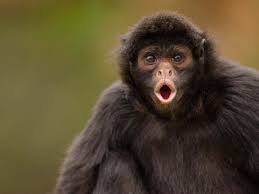Souvenir Sheet: Block memory of the year of the monkey (France 2016)
Block memory of the year of the monkey (France 2016)
29 January (France ) within release Chinese New Year 2016 - Year of the Monkey goes into circulation Souvenir Sheet Block memory of the year of the monkey face value 4*0.80 Euro
| Souvenir Sheet Block memory of the year of the monkey in catalogues | |
|---|---|
| Michel: | Mi: FR BL321 |
Souvenir Sheet is square format.
Also in the issue Chinese New Year 2016 - Year of the Monkey:
- Souvenir Sheet - Block memory of the year of the monkey face value 4*0.80;
- Souvenir Sheet - Block memory of the year of the monkey face value 4*0.80;
- Souvenir Sheet - Block memory of the year of the monkey face value 4*0.80;
Souvenir Sheet Block memory of the year of the monkey it reflects the thematic directions:
Chinese New Year or the Spring Festival (see also § Names) is a festival that celebrates the beginning of a new year on the traditional lunisolar Chinese calendar. Marking the end of winter and the beginning of spring, observances traditionally take place from Chinese New Year's Eve, the evening preceding the first day of the year, to the Lantern Festival, held on the 15th day of the year. The first day of Chinese New Year begins on the new moon that appears between 21 January and 20 February
Monkey is a common name that may refer to most mammals of the infraorder Simiiformes, also known as simians. Traditionally, all animals in the group now known as simians are counted as monkeys except the apes. Thus monkeys, in that sense, constitute an incomplete paraphyletic grouping; however, in the broader sense based on cladistics, apes (Hominoidea) are also included, making the terms monkeys and simians synonyms in regard to their scope.
The New Year is the time or day at which a new calendar year begins and the calendar's year count increments by one. Many cultures celebrate the event in some manner. In the Gregorian calendar, the most widely used calendar system today, New Year occurs on January 1 (New Year's Day, preceded by New Year's Eve). This was also the first day of the year in the original Julian calendar and the Roman calendar (after 153 BC)
The zodiac is a belt-shaped region of the sky that extends approximately 8° north and south (as measured in celestial latitude) of the ecliptic, the apparent path of the Sun across the celestial sphere over the course of the year. Also within this zodiac belt appear the Moon and the brightest planets, along their orbital planes. The zodiac is divided along the ecliptic into 12 equal parts ("signs"), each occupying 30° of celestial longitude. These signs roughly correspond to the astronomical constellations with the following modern names: Aries, Taurus, Gemini, Cancer, Leo, Virgo, Libra, Scorpio, Sagittarius, Capricorn, Aquarius, and Pisces.






